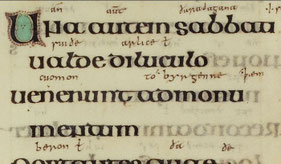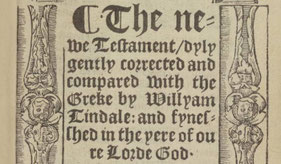- Home
- Aufbau der Bibel
- Fakten zur Bibel
- Historische Bibeln
- Aufbau der Menora
- Historische Menoras
- Auferstehung am Sabbat
- Einleitung
- Definitionen
- Interlinear-Text
- Kirchen-Meinungen
- 1. Kein Sonntag
- 2. Ein Sabbat
- 3. Kein Freitag
- 4. Zwischen-Tag
- 5. Drei Tage und drei Nächte
- 6. Manipulationen
- 7. Alte Bibeln
- Omer
- μια των σαββατων
- Mt-28-1
- Mk 16-2
- Mk 16-9
- Lk 24-1
- Joh 20-1
- Joh 20-19
- Apg 20-7
- 1Kor 16-2
- Lk 18-12
- 7 Sprachen
- Bibel-Ausgaben
- Zusammenfassung
- English
- Info
- Kalender und Feste
- Entrückung
- Video
- English
ENGLISCHE BIBELN - ONLINE - ENGLISH BIBLES
Die Geschichte der englischen Bibel beginnt zur Zeit der römischen Eroberung, als die lateinische Vulgata nach England gebracht und ins damalige „Old English“ (Anglo-Saxon) übersetzt wurde. Diese Webseite zeigt die Links zu den englischen Original-Bibel-Handschriften.
English: The history of the English Bible begins at the time of the Roman conquest, when the Latin Vulgate was brought to England and translated
into the then "Old English" (Anglo-Saxon). This website shows the links to the original English Bible manuscripts.

Copyright info and disclaimer: All content, all links and all photos from ancient and new Bibles provided on this website is for informational purposes only. We make no representations as to the accuracy or completeness of any information on this website or found by following any link on this website. We will not be liable for any errors or omissions in this information. We will not be liable for any losses, injuries, or damages from the display or use of this information. We can not guarantee the validity and accuracy of the information, please always check the original source. The opinions expressed from other website owners and those providing comments are theirs alone, and do not reflect the opinions of us. If an error should be found or if additional information should be included, please send us a message and we will update it as soon as possible.


